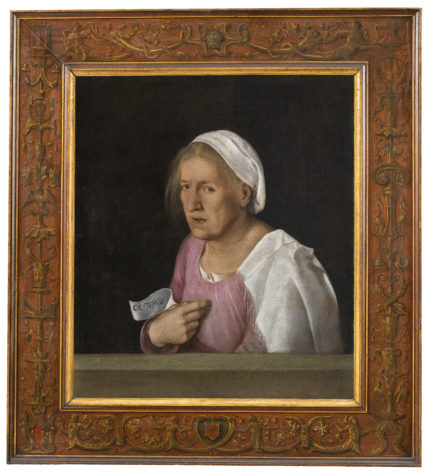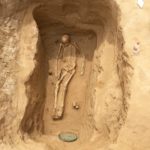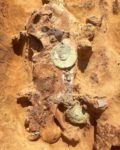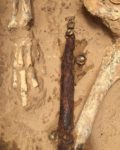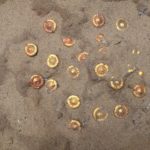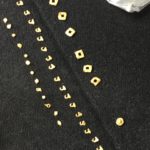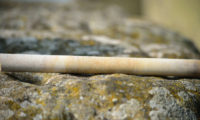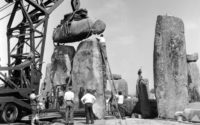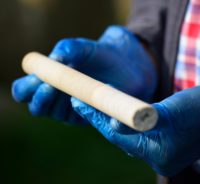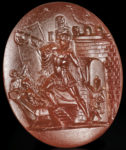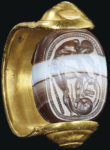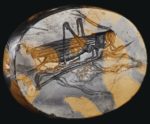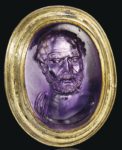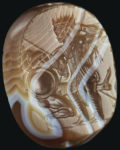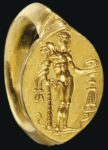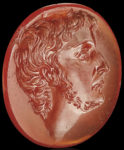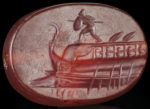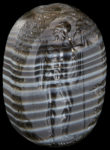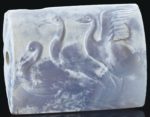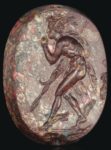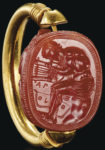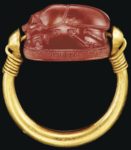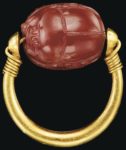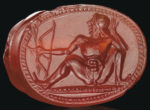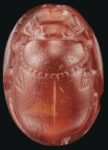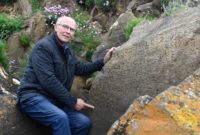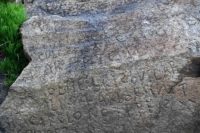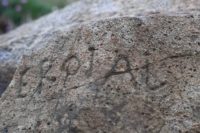 An extremely rare masterpiece by the Venetian Renaissance painter Giorgione has gone on display at the Wadsworth Atheneum Museum of Art in Hartford, Connecticut, from May 15 to August 4, 2019. La Vecchia (The Old Lady), is an unusual portrait of an elderly woman who stares open-mouthed at the viewer, reminding them that they too, if they’re lucky enough to live, will share her fate. It is being loaned to the Wadsworth by the Gallerie dell’Accademia in Venice.
An extremely rare masterpiece by the Venetian Renaissance painter Giorgione has gone on display at the Wadsworth Atheneum Museum of Art in Hartford, Connecticut, from May 15 to August 4, 2019. La Vecchia (The Old Lady), is an unusual portrait of an elderly woman who stares open-mouthed at the viewer, reminding them that they too, if they’re lucky enough to live, will share her fate. It is being loaned to the Wadsworth by the Gallerie dell’Accademia in Venice.
“La Vecchia is Giorgione’s poetic response to the natural phenomenon of aging,” says Oliver Tostmann, Susan Morse Hilles Curator of European Art of the Wadsworth. “It is a milestone in European portraiture in which Giorgione shows old age with implacable explicitness. It prompts us to confront our own mortality and the inevitable truth of growing old.”
The hyperrealistic portrayal of a haggard woman looking directly at us both attracts and repels at the same time. With her lips open as if about to speak, she gestures to herself. In her hand is a slip of paper inscribed with the words col tempo, “with time.” Painted more than 500 years ago, the unsparing naturalism and representation of the effects of aging
are unexpected, a striking departure from the more familiar, idealized portraits of the time. A recent conservation treatment, funded by [the Foundation for Italian Art and Culture], has removed discoloration and breathed new life into La Vecchia.
What little biographical information we have about Giorgione comes primarily from Vasari’s Lives of the Most Eminent Painters, Sculptors, and Architects. Vasari first introduces him in his chapter on Sebastiano del Piombo who began as a student of Giovanni Bellini but switched to Giorgione because the latter had “brought into Venice the newer manner, with its superior harmony and increased vividness of colouring.” Giorgione, who had himself had studied under Bellini, had such a profound influence on del Piombo’s style, Vasari states, that Sebastiano’s works were sometimes mistakenly believed to have been painted by Giorgione.
According to Vasari, Giorgione was born in 1477 (the date may or not be accurate) in Castelfranco Veneto, a small medieval town about 25 miles from Venice. Though of humble origins, Giorgione had fine manners, a love of literature and music (he was an excellent lute player) and was so dedicated to capturing nature that he always painted from life. He was inspired by Leonardo da Vinci’s keen grasp of anatomical realism coupled with the softness of color and shadows of his sfumato. Vasari compares Giorgione’s grasp of proportion, design and naturalism to Leonardo’s, saying his works “approached very closely to the excellence of his model.” His portraits were so life-like, Vasari says, that “the face appears to be real rather than painted.”
Giorgione’s talent was widely recognized in Renaissance Venice. He received multiple commissions for portraits, altarpieces and frescoes from the wealthiest and most important families. Sadly, his brilliant career was cut short. He was in his 30s when he died of plague in 1510. He died of plague, which Vasari says he caught from his inamorata.
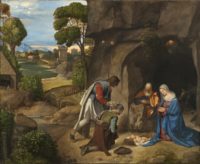 Today only six paintings are indisputably attributed to him. Several of the ones Vasari mentioned are now known to have been painted by contemporaries like Titian and Sebastiano del Piombo. The only one in the United States, the Adoration of the Shepherds at the National Gallery of Art in Washington, D.C., is of disputed authorship. The competing view is that it is an early work of Titian’s, and it’s a much more formal, less naturalistic scene than the portrait of La Vecchia. That’s why the Wadsworth exhibition is such a unique opportunity for people Stateside to view Giorgione’s work.
Today only six paintings are indisputably attributed to him. Several of the ones Vasari mentioned are now known to have been painted by contemporaries like Titian and Sebastiano del Piombo. The only one in the United States, the Adoration of the Shepherds at the National Gallery of Art in Washington, D.C., is of disputed authorship. The competing view is that it is an early work of Titian’s, and it’s a much more formal, less naturalistic scene than the portrait of La Vecchia. That’s why the Wadsworth exhibition is such a unique opportunity for people Stateside to view Giorgione’s work.
After experiencing Giorgione’ La Vecchia visitors will be invited to view the Wadsworth’s collection of Italian works of art including important Venetian Renaissance paintings by artists such as Sebastiano del Piombo, Tintoretto, and Jacopo Bassano. A group of deluxe books designed for and published by the famed Aldus Manutius—Venice’s leading purveyor of ancient and modern texts, known for their elegant design—are on view adjacent the Giorgione, as is the museum’s Andrea Previtali, Madonna and Child with a Donor in a landscape (c. 1504–05).
“Rarely do we have such a prime opportunity to reconnect with our shared humanity and with the Renaissance,” says Thomas J. Loughman, Director and CEO of the Wadsworth. “La Vecchia is without parallel in America as a major allegorical portrait by Giorgione, and this recent conservation provides the perfect occasion to learn and appreciate the
ideas behind the painting afresh.”
Giorgione (c. 1477/78–c. 1510), La Vecchia, 1502–08. Oil on canvas, 26 3/4 x 23 1/4 in. (68 x 59 cm), Gallerie dell’Accademia, cat. 272, © G.A. VE Photo Archive, Courtesy of the Ministry of Cultural Heritage and Activities—Gallerie dell’Accademia, Venice.
